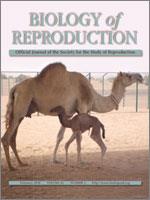Transgenic (Tg) animals are widely used in researching the characteristics of exogenous genes. Intracytoplasmic sperm injection (ICSI)-mediated transgenesis (ICSI-Tr) has been a useful method for generating Tg animals, especially in the mouse. However, the original methods using freeze-thawed spermatozoa showed severe chromosomal damage and low offspring rates after embryo transfer. Herein, we describe an improved method to generate Tg mice efficiently using a simple pretreatment of spermatozoa with 10 mM NaOH. These spermatozoa lost their plasma membrane and tail, while still maintaining nuclear integrity. Sperm heads were mixed with 0.5–5 ng/μl of the transgene for enhanced green fluorescent protein (EGFP) for 3 min to 1 h at room temperature and were then microinjected into oocytes by ICSI. The best results were obtained when treated spermatozoa were incubated with 2 ng/μl of EGFP for 10 min; 55.6% of injected embryos developed to the blastocyst stage, and more than half (56.9%) of them displayed EGFP fluorescence. Under these conditions, 12 pups of 34 offspring were positive for the transgene after transfer at the 2-cell stage into pseudopregnant recipient mice (a high rate [10.2%] from manipulated embryos). This method was found to be suitable for hybrid and inbred strains of mouse such as C57BL/6 and 129X1/Sv. Thus, a simple sperm pretreatment with NaOH before ICSI-Tr resulted in an efficient insertion of an exogenous gene into the host genome. This method allows for easy production of Tg mice, requiring fewer oocytes for micromanipulation than classical methods.
How to translate text using browser tools
7 October 2009
An Efficient Method for Generating Transgenic Mice Using NaOH-Treated Spermatozoa
Chong Li,
Eiji Mizutani,
Tetsuo Ono,
Teruhiko Wakayama
ACCESS THE FULL ARTICLE

Biology of Reproduction
Vol. 82 • No. 2
February 2010
Vol. 82 • No. 2
February 2010
assisted reproductive technology
early development
sperm
transgenesis




